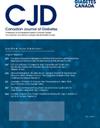Concomitant Detection of Serum Activating Transcription Factor 4 Levels and Mean Amplitude of Glycemic Excursion Is Helpful to Predict Osteoporosis in Adults With Type 2 Diabetes Mellitus
IF 2.6
4区 医学
Q3 ENDOCRINOLOGY & METABOLISM
引用次数: 0
Abstract
Objectives
Activating transcription factor 4 (ATF4) and mean amplitude of glycemic excursion (MAGE) have been implicated in the pathogenesis of osteoporosis (OP) and type 2 diabetes mellitus (T2DM). In this retrospective cohort study we assessed the predictive value of serum ATF4 and MAGE for occurrence of OP in individuals with T2DM.
Methods
A total of 162 individuals with T2DM were assigned to T2DM or T2DM+OP groups. All participants underwent serum ATF4 level detection and 72-hour blood glucose monitoring (MAGE measurement). The correlations of ATF4 and MAGE with glucose and bone metabolism indicators and bone mineral density (BMD) were analyzed. A multivariate logistic regression model was developed to evaluate the correlations of ATF4 and MAGE with T2DM-associated OP. The diagnostic performance of concomitant detection of ATF4 and MAGE was assessed based on area under the receiver operating characteristic (AUC) curve.
Results
Individuals with T2DM with OP had higher serum ATF4 levels and MAGE than those with T2DM only. ATF4 and MAGE correlated positively with fasting insulin, glycated hemoglobin, homeostatic model for insulin resistance assessment, beta-C-terminal crosslinking telopeptide of type I collagen, and tartrate-resistant acid phosphatase-5b, but negatively with bone alkaline phosphatase, serum procollagen type I N-propeptide, procollagen type I carboxy-terminal propeptide, and BMD. Elevated levels of ATF4 and MAGE were independent risk factors, but increased BMD at the hip, femoral neck, and lumbar spine was a protective factor for individuals with T2DM with OP. More importantly, the AUC of concomitant ATF4 and MAGE was considerably higher than that of ATF4 or MAGE alone.
Conclusion
Concomitant detection of ATF4 and MAGE may aid in predicting the occurrence of OP in individuals with T2DM.
同时检测血清 ATF4 水平和 MAGE 有助于预测 2 型糖尿病患者骨质疏松症的发生。
背景:活化转录因子 4(ATF4)和平均血糖偏移振幅(MAGE)与骨质疏松症(OP)和 2 型糖尿病(T2DM)的发病机制有关。这项回顾性队列研究评估了血清 ATF4 和 MAGE 对 T2DM 患者发生 OP 的预测价值:共有 162 名 T2DM 患者被分为 T2DM 组和 T2DM + OP 组。所有参与者均接受了血清 ATF4 水平检测和 72 小时血糖监测(MAGE 测量)。分析了 ATF4 和 MAGE 与血糖、骨代谢指标及骨矿物质密度(BMD)的相关性。建立了一个多变量逻辑回归模型来评估 ATF4 和 MAGE 与 T2DM 相关 OP 的相关性。根据接收者工作特征曲线下面积(AUC)评估了同时检测 ATF4 和 MAGE 的诊断性能:结果:与T2DM患者相比,患有OP的T2DM患者的血清ATF4水平和MAGE水平更高。ATF4 和 MAGE 与 FINS、HbA1c、HOMA-IR、β-CTX 和 TRACP-5b 呈正相关,与 BALP、PINP、PICP 和 BMD 呈负相关。ATF4 和 MAGE 水平升高是独立的风险因素,但髋部、股骨颈和腰椎的 BMD 增加则是 T2DM OP 患者的保护因素。更重要的是,同时检测 ATF4 和 MAGE 的 AUC 远高于单独检测 ATF4 或 MAGE 的 AUC:结论:同时检测 ATF4 和 MAGE 有助于预测 T2DM 患者 OP 的发生。
本文章由计算机程序翻译,如有差异,请以英文原文为准。
求助全文
约1分钟内获得全文
求助全文
来源期刊

Canadian Journal of Diabetes
ENDOCRINOLOGY & METABOLISM-
CiteScore
4.80
自引率
4.00%
发文量
130
审稿时长
54 days
期刊介绍:
The Canadian Journal of Diabetes is Canada''s only diabetes-oriented, peer-reviewed, interdisciplinary journal for diabetes health-care professionals.
Published bimonthly, the Canadian Journal of Diabetes contains original articles; reviews; case reports; shorter articles such as Perspectives in Practice, Practical Diabetes and Innovations in Diabetes Care; Diabetes Dilemmas and Letters to the Editor.
 求助内容:
求助内容: 应助结果提醒方式:
应助结果提醒方式:


